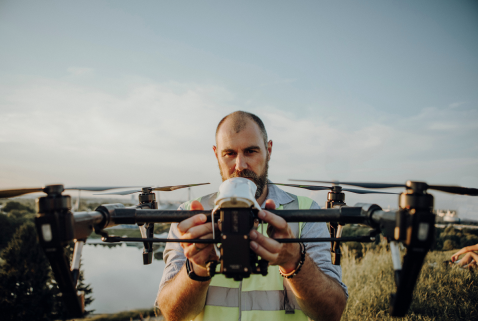

Here are some general drone safety guidelines
Drone registration is a regulatory requirement in many countries to ensure the safe and responsible use of unmanned aerial vehicles (UAVs) or drones. The primary purpose of drone registration is to keep track of drone owners and their devices, which helps authorities enforce safety guidelines, manage airspace, and address security concerns.
Respecting people’s privacy and adhering to ethical practices while operating a drone is crucial. Drones equipped with cameras can capture images and videos, raising concerns about privacy infringement.
Maintaining visual contact with your drone during flight is a fundamental safety practice that enhances situational awareness and reduces the risk of accidents. By keeping the drone within your line of sight, you can promptly identify and navigate around obstacles, ensuring a clear understanding of its surroundings.
It is imperative to avoid flying drones near airports, military bases, and other restricted areas due to the potential safety hazards they pose. Drones can interfere with manned aircraft, creating a serious risk to aviation safety. Proximity to airports and military installations increases the likelihood of collision with commercial or military aircraft, which could lead to catastrophic consequences.
It is essential to avoid flying drones in adverse weather conditions, including strong winds, rain, or fog, as these elements can significantly impact the stability and control of the aircraft. Strong winds can cause instability and difficulty in maintaining a steady flight path, potentially leading to accidents or loss of control.
It is imperative to maintain a safe distance from wildlife when operating drones to prevent disturbance and potential risks to both animals and the drone itself. Drones can cause stress to wildlife, disrupting their natural behaviors and habitats. Flying too close to animals may lead to unintended consequences, such as startling or frightening them, potentially causing injury or altering their normal activities.
Selecting open areas away from crowds, buildings, and busy streets is essential for safe and responsible drone flights. Optimal locations include parks and open fields, which provide ample space for maneuvering the drone without the risk of collisions with structures or pedestrians.
Lorem ipsum dolor sit amet, consectetur adipiscing elit, sed do eiusmod tempor incididunt ut labore et dolore magna aliqua. Ut enim ad minim veniam, quis nostrud exercitation ullamco laboris nisi ut aliquip ex ea commodo consequat.